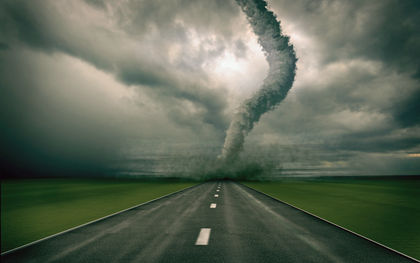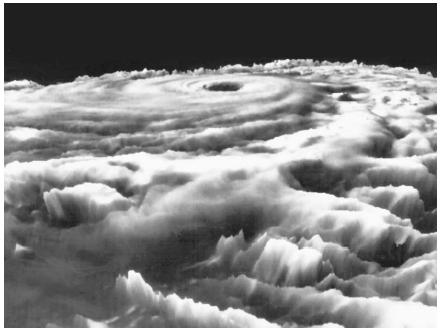Cyclone and anticyclone

A cyclone is a storm or system of winds that rotates around a center of low atmospheric pressure. An anticyclone is a system of winds that rotates around a center of high atmospheric pressure. Distinctive weather patterns tend to be associated with both cyclones and anticyclones. Cyclones (commonly known as lows) generally are indicators of rain, clouds, and other forms of bad weather. Anticyclones (commonly known as highs) are predictors of fair weather.
Winds in a cyclone blow counterclockwise in the Northern Hemisphere and clockwise in the Southern Hemisphere. Winds in an anticyclone blow just the opposite. Vertical air movements are associated with both cyclones and anticyclones. In cyclones, air close to the ground is forced inward toward the center of the cyclone, where pressure is lowest. It then begins to rise upward, expanding and cooling in the process. This cooling increases the humidity of the rising air, which results in cloudiness and high humidity in the cyclone.
In anticyclones, the situation is reversed. Air at the center of an anticyclone is forced away from the high pressure that occurs there. That air is replaced in the center by a downward draft of air from higher altitudes. As this air moves downward, it is compressed and warmed. This

warming reduces the humidity of the descending air, which results in few clouds and low humidity in the anticyclone.
Hurricanes and typhoons
Cyclones that form over warm tropical oceans are called tropical cyclones (they are also known as tropical storms or tropical depressions). Tropical cyclones usually move toward the west with the flow of trade winds. A tropical cyclone that drastically increases in intensity is known as a hurricane when it occurs in the Atlantic Ocean or adjacent seas. To be classified as a hurricane, a tropical cyclone must produce winds over 74 miles (119 kilometers) per hour. Hurricanes usually generate off the coast of West Africa and move westward toward Central America and the eastern United States. They increase in size and strength until they reach land or more northern latitudes. In addition to high, sustained winds, hurricanes deliver heavy rain and devastating ocean waves.
In the western Pacific Ocean and adjacent seas, a hurricane is known as a typhoon. This word comes from the Cantonese tai-fung , meaning "great wind."
[ See also Atmospheric pressure ; Storm surge ; Tornado ; Weather ; Wind ]